MARKET OVERVIEW
The Global Scuba Diving Equipment Market is the manifestation of the individual's passion for underwater exploration and supported by material innovations and design in equipment technology. Current trends ascertain more on either product development or consumer preference; however, when looked at from the dimension of this market, it is something that spreads way beyond the conventional analysis. Future narratives of this market will be more on deep integration with environmental accountability, as in not only how the equipment performs but how it goes in accordance with ecological awareness.
In the future, the Global Scuba Diving Equipment Market will be guided by a wide perspective of sustainability in the methods and materials for production. Divers will demand even more such type of equipment, much less detrimental to marine ecology, which would spur design priorities across major equipment segments such as wetsuits, regulators, and buoyancy compensators. Consumer demand will not solely transform the design, but policy direction and certification requirements which will arise as marine conservation becomes a more urgent global discourse.
Apart from recreational purposes, this future market will also align itself with scientific, rescue, and archaeological diving missions. Such institutions that perform marine studies or underwater construction and preservation activities will demand more advanced facilities which can withstand longer deep-sea exposure. Such special requirements will form another diversification in demand other than that of tourism or sport and thus further drive the importance of the Global Scuba Diving Equipment Market into new verticals. The diving equipment will evolve itself around technologies supportive of mapping, monitoring, and documenting aquatic biodiversity as underwater data collection becomes more sophisticated and precise.
Digital transformation will fundamentally change how users use their gear. Intelligent suits with sensors, augmented reality masks providing real-time information, and smart air management systems will move from gimmick to necessity for diving today. Such features will not only further enhance safety but also provide unique opportunities for manufacturers to further develop and evolve customer engagement through data tracking and personalization. It will not happen overnight, but the market will be defined by those brands who chose to invest in these capabilities.
Moreover, the Global Scuba Diving Equipment Market is going to undergo high cross-collaboration with the travel industry. Eco-responsible equipment rentals with packaged guided diving tours will gradually become mainstream as divers seek simplicity without compromising quality or values.
Global Scuba Diving Equipment market is estimated to reach $3,118.53 Million by 2032; growing at a CAGR of 3.6% from 2025 to 2032.
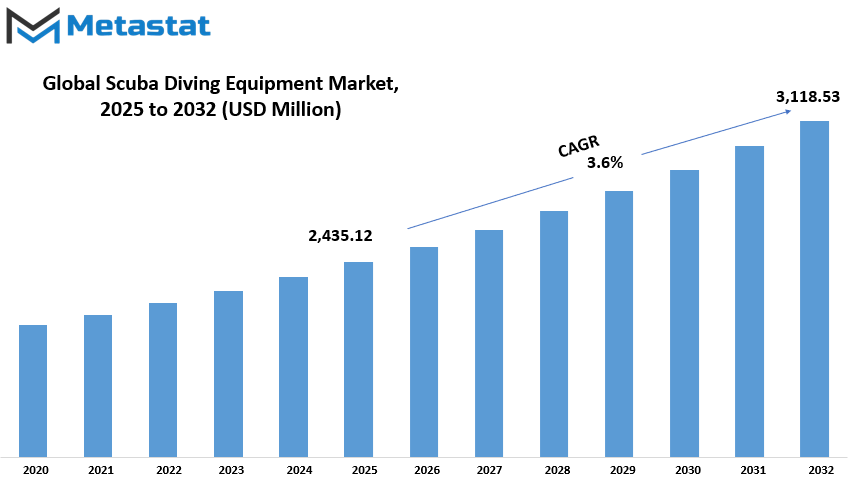
GROWTH FACTORS
The global scuba diving equipment market is booming in comparatively higher space due to marine tourism and adventure sports. The people of the world are exploring the oceans not just for recreation. There are experiences like diving, which take those who dare to go down and have a firsthand look at the hidden beauty of underwater life. With more and more people looking for these kinds of adventures, the demand for trustworthy and top-quality diving equipment remains an ever-increasing one. With this awareness of their impact on the environment, divers have stepped up their demand for eco-friendly diving equipment. Brands have responded by designing and producing equipment from sustainable materials that have newer designs that guarantee safety and efficiency.
Another supporting factor for the growth of this market is the ever-greater supply of sophisticated diving equipment. From improved tanks for safe and easy breathing to the very latest in wetsuit design and convenient underwater camera features, technology is helping make diving not only safer but also more fun. But these favorable developments come with some challenges to the market. One big deterrent is that one needs to disburse a lot of money in training and gear. Most of these upfront expenses can deter a beginner from signing up. There is considerable interest in trying scuba diving, but high entry-level cost holds many backs.
Another concern would-be divers might consider is safety. Like any sport or recreational activity, diving comes with certain risks, many of which could be realized in practice if one is untrained and poorly equipped. Such worries generally inhibit most people from taking a plunge into the waters, especially novices and those with certain medical conditions. However, opportunities could abound, such as exploring coastal tourism in countries whose travel industry is growing. There, a bigger population would be traveling to very attractive beaches and diving places where there would be a growing market for scuba diving equipment.
Technology is another force keeping the industry moving. Smart diving gadgets such as wearables and communication tools under the water are emerging rapidly. Such technologies are brightening up the interesting world of diving while enhancing its safety. Hence, as long as brands make sustainability a core consideration in improving safety, the market shall prosper. Looking into the future, the scuba diving equipment market seems dappled with good prospects for novice and experienced divers all at the same time with an equilibrium set on price, technology, and eco-friendliness.
MARKET SEGMENTATION
By Equipment Type
The global scuba diving equipment market is growing steadily as man's penchant for underwater excursions and adventure activities increases. Travel increased over time, and so did man's demands for diversification; and so scuba diving today is considered a most enjoyable activity; thus, the growing demand for rugged and user-friendly diving apparatus. Equipment is but not limited to safety; it can amplify comfort and enhance the general experience underwater. It's the factor that really makes a difference in how enjoyable and safe the dive is for a novice and for a professional diver.
Diving goggles are one of the major diving equipment by which diver sees beautifully and clearly underwater. The segment amounts to $476.10 million by value, signifying high demands worldwide for such a specialized type of equipment. There are many reasons for clear visibility when diving, which is why this piece of equipment remains among the best options for individual use as well as commercial purposes. Another important component that forms part of diving equipment includes regulators and octopuses. They control airflow from the tank to the diver, allowing for proper underwater breathing, and they are so important in any dive setup and continue to be very widely used.
Buoyancy control devices, better known as BCDs, are also another useful piece of equipment for control purposes whilst diving. They can be explained as devices that ensure that the divers maintain their desired depth while moving easily without exhausting themselves. Wetsuits and drysuits are used to insulate the diver's body, keeping it warm and shielding it from rough surfaces, cool temperatures, and marine life. Such suits enable people to go diving in varying water conditions, which further increases their popularity. Fins allow for easier movement within the water. These, combined with energy saving and greater swimming speed, help to complete the journey more quickly, especially when traveling long distances or against underwater currents.
Apart from these, there are other mechanical elements and accessories that complement the activity of diving. Some of these include dive computers, lights, gloves, and even underwater cameras that improve the overall diving experience. With better safety standards and diversification in access to diving, people are willing to invest in quality gear. This has further propelled the market growth. Travel and tourism will continues to grow together with the interests and appealing over the years towards the marine life, making the demand for scuba diving gear rise. Manufacturers are expected to focus on comfort, safety, and new technology to meet the needs of both new and experienced divers.
By Consumer Group
The scuba diving equipment market is really segmented upon different consumer groups like men and women. This split has of late been accentuated by the fact that many people now take up the athlete's diving as recreation or sport or for pure fun. The diving equipment must meet certain standards of safety and performance; oftentimes, these standards are influenced by who uses the gear. The understanding of men and women varying in their preferences and needs assists the manufacturers to bring in products that suit each group better and make diving safer and more fun for all.
Men constitute a sizeable part of the scuba-diving population, and they seek equipment that will fit them in body shape, strength, and stamina. These factors are generally taken into consideration by the manufacturers in the production of men's diving gear. Examples include larger wetsuits, fins designed to be used with stronger leg power, and tanks that can suit someone of a rather tall stature. In general, many male divers focus on the functional aspects of the equipment they choose, selecting gear that's tough enough to withstand repeated punishment under all sorts of diving conditions. The design and weight distribution of gear are also adjusted to aid them to feel comfortable while working hard in the water.
As part of the steadily stimulating demand for equipment that fits women's bodies properly and works well, the number of women who dive in the sport has also increased. In the olden days, a woman would be forced to using diving gear made for men with discomfort, an aberrant inconvenience for diving. Nowadays, even companies realize there is a big demand for female-diving products, which include comfortable wetsuits shaped better for women, lightweight gear that eases the handling issue, and appropriately fitting masks for smaller faces. Female divers also appreciate style and comfort, thereby giving impetus to firms to produce gear that works well and looks good.
The gender division in the diving equipment market highlights an important step in raising awareness for inclusivity within the industry. Companies that cater to the needs of each gender have been able to improve the diving experience for all. More divers now see a connection with their gear and feel confident and prepared in the water with the right fit and support in safety standards. With an ever-growing interest in scuba diving, the market will anticipate continuous divergence and innovation while developing new equipment that meets the evolving needs of both men and women. Hence, this makes the world of scuba diving open, fun, and safe for everyone involved.
By Price Range
It covers the preferences and budgets of consumers, among other things, that have shaped the global scuba diving equipment market. With regard to the different classifications with the prices, the market usually comprises two types: low-mid to high-end. This market comprises different segmented members as per the needs of varying types of divers-the novice and the professional-and quite specifically, as far as the important contribution to the industry's growth is concerned.
Low-middle price equipment would attract the beginner and recreational divers, as well as those who only do an occasional dive. The purpose of these products is their low price that serves adequate features necessary for safe and enjoyable diving. Included in the category are masks, snorkels, fins, wet suits, and buoyancy control devices which meet the basic standards without adding other features. Most beginners start learning how to scuba dive through such types of equipment, as they can gauge the activity without investing a great deal up front. Hence, this segment is almost an entry point into the world of scuba diving including encouraging many to take up the sport.
Meanwhile, high-end equipment is targeting the experienced and professional divers who really need advanced features and more hardness in their equipment. Such gear typically includes top-grade raw materials, better fitting, more safety features, and the latest technology in terms of dive computers and integrated communication systems. Although more expensive than the cheaper ones, most experienced divers consider this investment justified in terms of performance, comfort, and reliability. High-end gear is usually targeted for deep and long dives where safety and accuracy are even more crucial.
The market segmentation into these two categories actually helps the manufacturers and retailers in understanding what different customer segments are looking for. Those brands having products in these two categories would reach a wider audience, from recreational users to technical divers. Demand in these two segments influences marketing strategies, product development, and pricing decisions. Underwater activities and associated travel and tourism related to diving destinations continue to drive the market forward. Thus, as an increasing number of populace are entering into scuba diving concerning the awareness for marine life and environmental conservation, this trend would also keep on holding a steady increase for the low-mid end segment as well as for the high-end segment.
In the end, the difference in pricing and features thus facilitates scuba diving to be more popular, and it perfectly fulfills the higher demands of experienced divers. Thus, it ensures that the market grows in an even and sustainable manner.
By End-User
The global scuba diving gear market is affected by the wants and habits of two principal groups: recreational divers and professional divers. Different needs of the two diver groups signify different types of equipment to be manufactured, as well as which features of the equipment are most desired. Most of the market shares are held by recreational divers. The divers within this category predominantly engage in diving for fun, exploration, or leisure. Recreational divers are basically interested in easy, cheap, and durable gear.
Their kit usually consists of basic accessories like masks, fins, snorkels, wetsuits, and entry-level buoyancy control devices. When manufacturers design for this group, they put an emphasis on comfort, safety, and style. Lightweight materials and technologies that are approved by users are some of the new technologies incorporated into the designs for the benefit of the occasional divers. Marine tourism continues to grow, bringing in more new divers to the sport, thus creating an ever-increasing demand for recreational diving equipment.
On the contrary, the professional divers consider performance and durability attributes on their equipment. The professional category includes instructors, rescue divers, underwater photographers, and divers doing commercial work everywhere. All of these need their equipment because they work in deeper, more challenging waters. For this reason, they use advanced equipment, such as dry suits, big air tanks, dive computers, and underwater communications. Equipment used professionally must meet rigorous safety standards and behave predictably under pressure. Brands targeting this segment put more effort into research and development in designing equipment that can support long dives, assisting users to operate safely in difficult environments. Innovations arising from the professional segment find their way to the key-market later on depending on the views and expectations of the professional divers.
Both diver types and their activities shape and expand the present and future ways of life for the scuba diving equipment industry. While demand in volumes is the way recreational divers influence the market, professional divers affect the market in terms of quality and innovations. Seasonal trends, travel patterns, and environmental awareness also come into play regarding what kinds of gear divers seek. For instance, following the growing awareness of ocean conservation, there is an increasing appreciation for eco-friendly diving equipment. This is an inclination present in both sectors: recreational and professional, where users demand gear that does not hurt marine life.
In summary, the global scuba diving equipment market will be booming increasingly, defined by the unique wants and needs of recreational and professional divers. The stronger the interest becomes for underwater exploration, the more pertinent this market will become in equipment designed to be safe, comfortable, and absolutely tailored for each diver type.
|
Forecast Period |
2025-2032 |
|
Market Size in 2025 |
$2,435.12 million |
|
Market Size by 2032 |
$3,118.53 Million |
|
Growth Rate from 2025 to 2032 |
3.6% |
|
Base Year |
2024 |
|
Regions Covered |
North America, Europe, Asia-Pacific, South America, Middle East & Africa |
REGIONAL ANALYSIS
This global scuba diving equipment market is analyzed under various regions so that it can understand demand and growth at different parts of the world. The regions mainly include North America, Europe, Asia Pacific, South America, and the Middle East & Africa. North America is also categorized into the United States, Canada, and Mexico, with the significant role of U.S. in driving the market because of their long coastline, very active diving community and number of certified divers. Canada and Mexico are also important parts of the market with Mexico being famous for recreational diving because of its relatively warm water and renowned dive sites.
In Europe the market further branches into UK, Germany, France and Italy and the Rest of Europe. People in this area have a steady interest in scuba diving, especially the Mediterranean and coastal areas. UK and Germany are stable economies which can easily afford scuba diving gear, while Italy and France cater not only for the local diver but also for international divers to their clear coastal waters. The rest of Europe constitutes countries which are steadily increasing in interest towards water sports and outdoor activities, thus helping to create a demand for equipment.
The Asia-Pacific region consists of India, China, Japan, South Korea, and the Rest of Asia-Pacific. This region is showing an upward trend with more people diving for adventure and leisure. Countries like Japan and South Korea have a well-developed market, while India and China are expanding rapidly due to the increase in travel and underwater exploration interests. The lovely tropical waters and tourism" development in many parts of Southeast Asia are also making diving more attractive to people and hence driving up the equipment market.
In South America, the two primary players in the market are Brazil and Argentina, plus the Rest of South America. Brazil demonstrates a coastline and warm water that stand out as top local and visiting favorite for divers. Argentina, as it turns out, grows even more excited as it piqued interest in its continent's watersports hype.
The Middle East & Africa consist mainly of the GCC Countries, Egypt, South Africa, and the Rest of the region. Egypt plays a vital role because it has the Red Sea, which is internationally known for clear water and rich aquatic life. Diving has also become quite popular in South Africa, as there are many areas where people enjoy viewing marine species. The countries of GCC are now gaining more popularity with tourism and water sports coming into fashion in this region, which bodes well for the future of diving gear demand in the region.
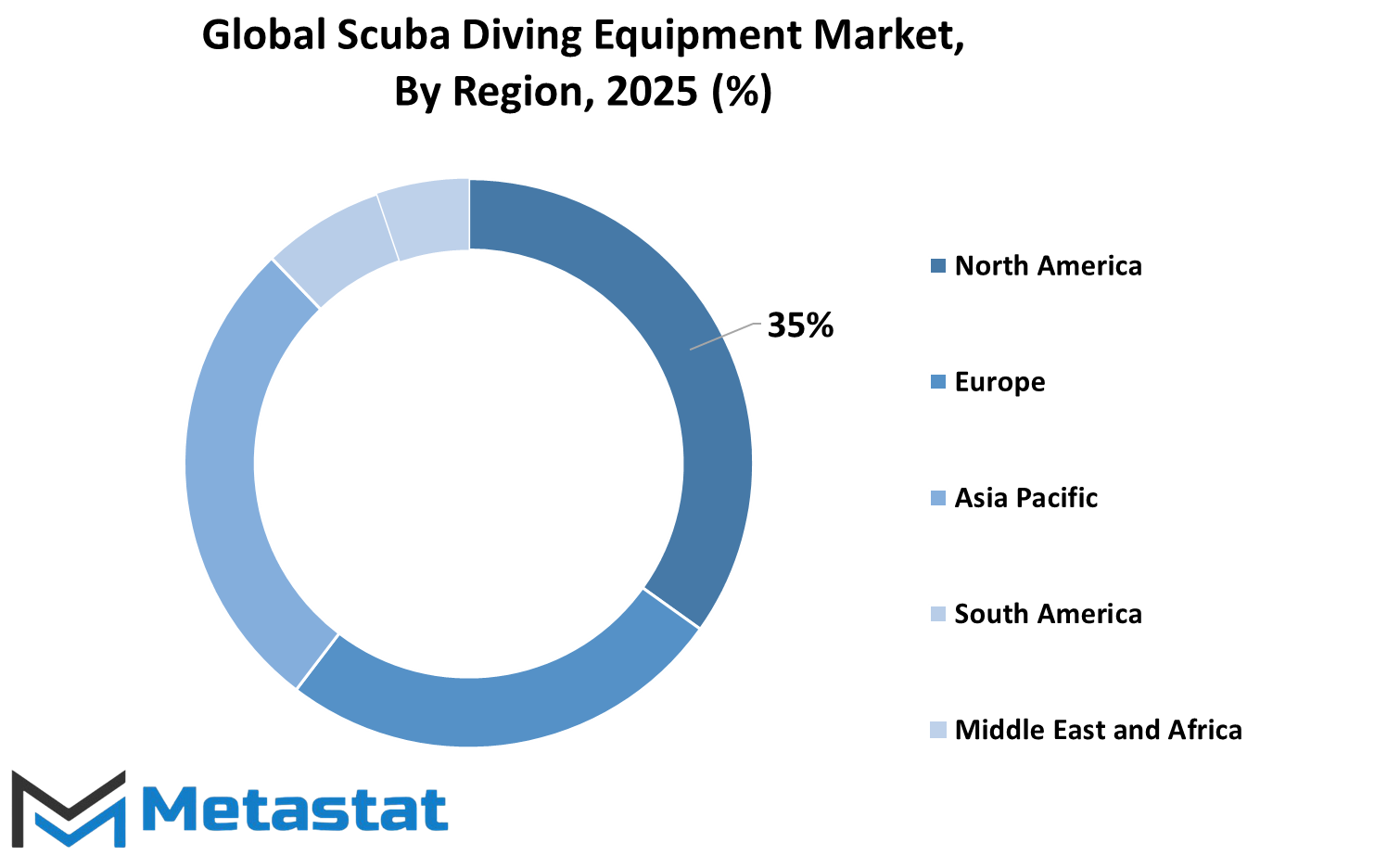
COMPETITIVE PLAYERS
Worldwide marketing for scuba diving equipment is expanding with each passing year due to ever-increasing interest in the domain of underwater sports and recreational diving. A lot of people consider scuba diving a means to connect with marine life and nature more than just a sport. This added curiosity toward the sport increases demand for all the equipment that provides safety features and a smooth diving experience. New divers are principally after equipment that is believed to be reliable, easy to put on, and comfortable, while the experienced divers are after equipment that has advanced features to enable them deep exploration and constant use over long periods. These insights all give rise to the special considerations that will allow the development and prospects of the ever-growing market, in that as markets expand, they provide for products intended for divers of different skill levels.
Increased awareness about marine conservation and adventure tourism is an equally important growth factor. Scuba diving destinations worldwide have turned into trendy spots for travel, thus helping tourism boards and travel companies promote diving activities. This trend also meant that many dive shops and training centers stocked quality equipment with big name brand names; these brands shape the market most in that consumers often trust brands stereotyped as durable, safe, and innovative. Some of the world-famous companies engaged in the scuba diving equipment business include Aqua Lung International, Cressi Sub S.p.A., Johnson Outdoors Inc., Mares S.p.A., Beuchat International S.A., Sherwood Scuba LLC, TUSA (Tabata Co., Ltd.), Scubapro, Huish Outdoors LLC, Dive Rite, Inc., Atomic Aquatics, Seac Sub S.p.A., Northern Diver (International) Ltd., Zeagle Systems Inc., Typhoon International Ltd., XDeep, and OMS (Ocean Management Systems).
Working in the area, companies have also introduced energetic developments in wider vision masks, lightweight fins, high-performance regulators, and dive computers capable of highly accurate tracking. Companies are working on improving the materials to make suits and gear resistant to wear without sacrificing lightweight and flexible characteristics. Environmental concerns have triggered the interest of some of the producers to incorporate sustainable materials and eco-friendly production methods. Such a move would not only help conservation efforts but also win the goodwill of eco-conscious customers wanting their gear to align with their values. The conditions for improvement in products together with increasing interest in scuba diving would contribute to an outright increase in the market for scuba diving equipment in the years to come thus providing an ample opportunity for both novice divers and experts.
Scuba Diving Equipment Market Key Segments:
By Equipment Type
- Diving Masks & Goggles
- Regulators & Octopuses
- Buoyancy Control Devices (BCDs)
- Wetsuits & Drysuits
- Fins
- Others
By Consumer Group
- Men
- Women
By Price Range
- Low-mid End Equipment
- High-End Equipment
By End-User
- Recreational Divers
- Professional Divers
Key Global Scuba Diving Equipment Industry Players
- Aqua Lung International
- Cressi Sub S.p.A.
- Johnson Outdoors Inc.
- Mares S.p.A.
- Beuchat International S.A.
- Sherwood Scuba LLC
- TUSA (Tabata Co., Ltd.)
- Scubapro
- Huish Outdoors LLC
- Dive Rite, Inc.
- Atomic Aquatics
- Seac Sub S.p.A.
- Northern Diver (International) Ltd.
- Zeagle Systems Inc.
- Typhoon International Ltd.
- XDeep
- OMS (Ocean Management Systems)
WHAT REPORT PROVIDES
- Full in-depth analysis of the parent Industry
- Important changes in market and its dynamics
- Segmentation details of the market
- Former, on-going, and projected market analysis in terms of volume and value
- Assessment of niche industry developments
- Market share analysis
- Key strategies of major players
- Emerging segments and regional growth potential



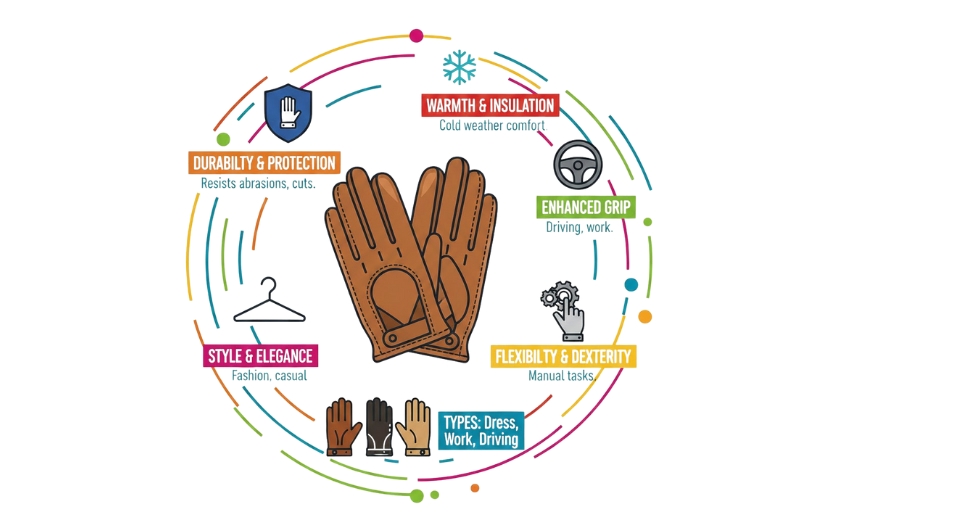
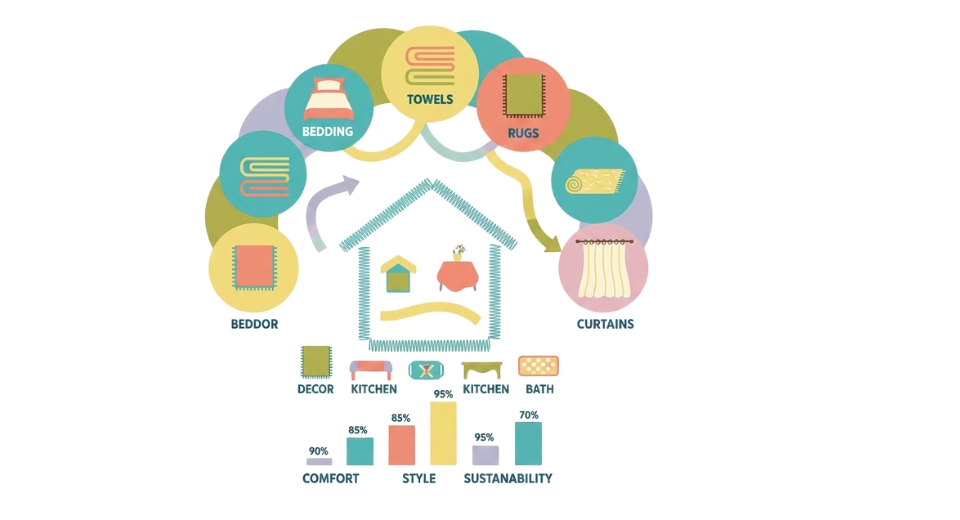
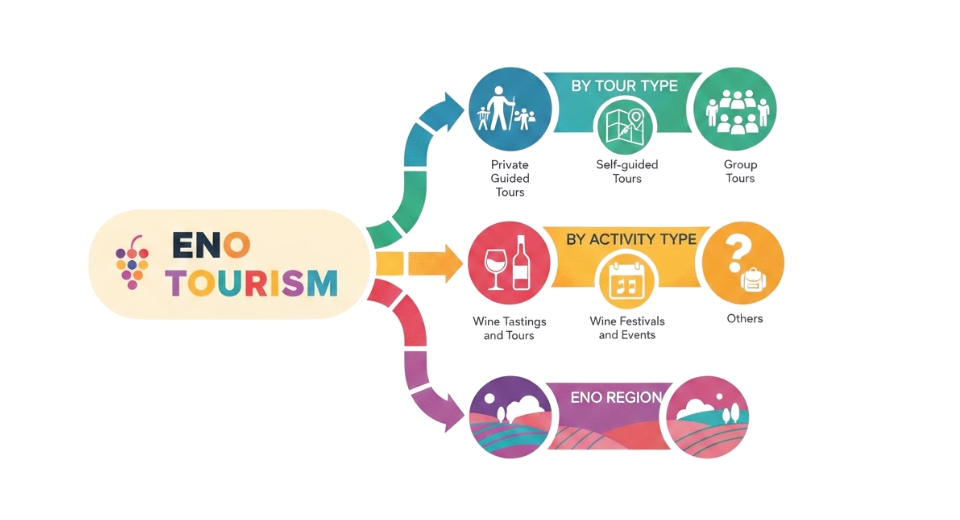
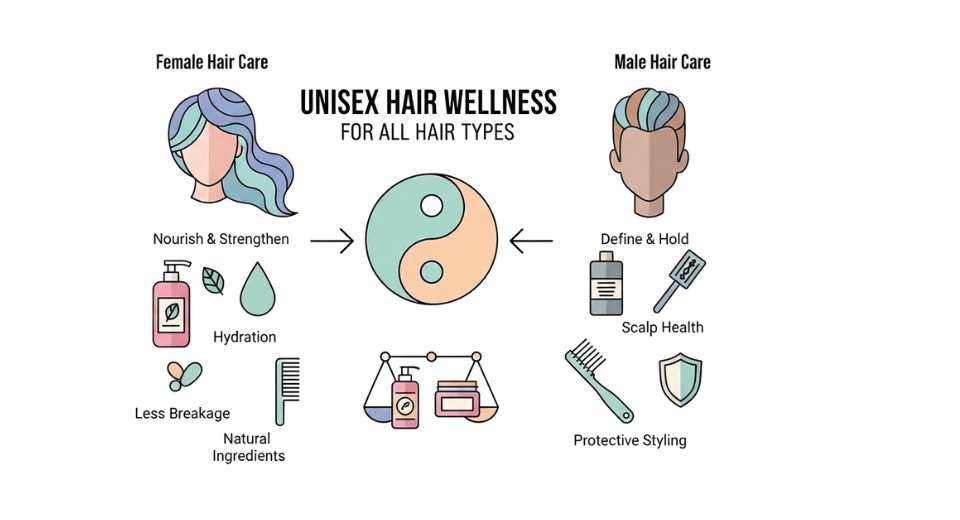

 US: +1 3023308252
US: +1 3023308252






